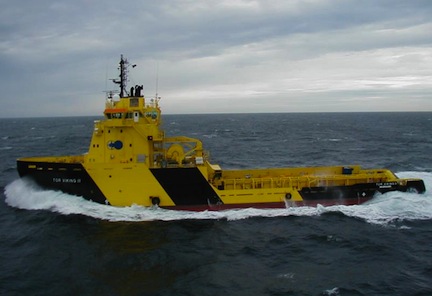The following is text of a news release from Public Services and Procurement Canada:
(LEVIS, Quebec) — The government of Canada is committed to providing the Canadian Coast Guard with the equipment it needs to carry out its important work, while providing economic opportunities for the Canadian marine sector. The purchase of three medium commercial icebreakers will help to ensure continuity of service for Coast Guard clients and the safe passage of marine traffic through Canada’s waterways.
Following a fair, open and transparent process that included extensive industry engagement, Public Services and Procurement Canada, on behalf of the Canadian Coast Guard, has awarded a $610 million contract to Chantier Davie of Levis, Quebec for the acquisition of three icebreakers and work to prepare the first ship for service in the Canadian Coast Guard.
Further costs will be known once the government of Canada has examined the vessels and determined what work is required to prepare them for service.
This contract will help to secure up to 200 well-paying middle-class jobs at Chantier Davie.
The first vessel is expected to begin operations for the upcoming icebreaking season, beginning in December 2018. The second and third vessels will be converted, refit and available to support Coast Guard programs by the summer of 2019 and the winter of 2019-2020, respectively.
This contract follows an Advance Contract Award Notice that was issued on June 22.
“Our government is firmly committed to ensuring the women and men of the Canadian Coast Guard have the equipment they need to carry out their important work on behalf of Canadians from coast to coast to coast. This contract will help support Coast Guard operations and will create and maintain jobs in the region,” said Carla Qualtrough, minister of Public Services and Procurement and Accessibility.
“The acquisition of these icebreakers is proof of our government’s commitment to keep our waterways open for business year-round and to support our coastal communities. This is a great day for the Coast Guard and for the Canadians they serve," said Jonathan Wilkinson, minister of Fisheries, Oceans and the Canadian Coast Guard.
“This contract underscores our commitment to Chantier Davie and its workers. Davie workers have done an incredible job with the Asterix and the government of Canada is proud to work with Davie on this new contract which will secure up to 200 well-paying middle-class jobs at the shipyard for the next 24 months. This is great news for the Quebec City region," said Jean-Yves Duclos, minister of Families, Children and Social Development.
Quick facts
With this contract, the government of Canada has now awarded more than $8.1 billion of National Shipbuilding Strategy-related contracts across Canada.
This contract nearly doubles the total value of contracted shipbuilding work to companies in Quebec.
Of the total value, approximately 17 percent – or more than $1.3 billion – has been awarded to companies in Quebec, including small or medium-sized enterprises with less than 250 full-time employees.
This contract will ensure that shipping lanes in the St. Lawrence River remain open in the winter.
Icebreakers are crucial to Canadian Coast Guard services, vital to the safety of mariners, the protection of coastal waters, resupply of northern communities and the orderly flow of commerce through Canadian waters that contributes more than $200 billion to the Canadian economy.
These ships will supplement the Coast Guard’s existing fleet while they undergo refits and repairs. They will conduct critical missions such as icebreaking duties for the Southern wintertime program and will be deployed as needed in support of Arctic summertime programs.
Editor's note: Viking Supply Ships of Sweden announced on Aug. 10 that is has sold three icebreaking anchor handling tug supply (AHTS) vessels — Tor Viking, Balder Viking and Vidar Viking — to Canada. The transaction is expected to close by the end of August.
According to Viking, the vessels are classed DNV Ice-10 and are capable of operations in "harsh environment offshore regions and Arctic/sub-Arctic regions."

